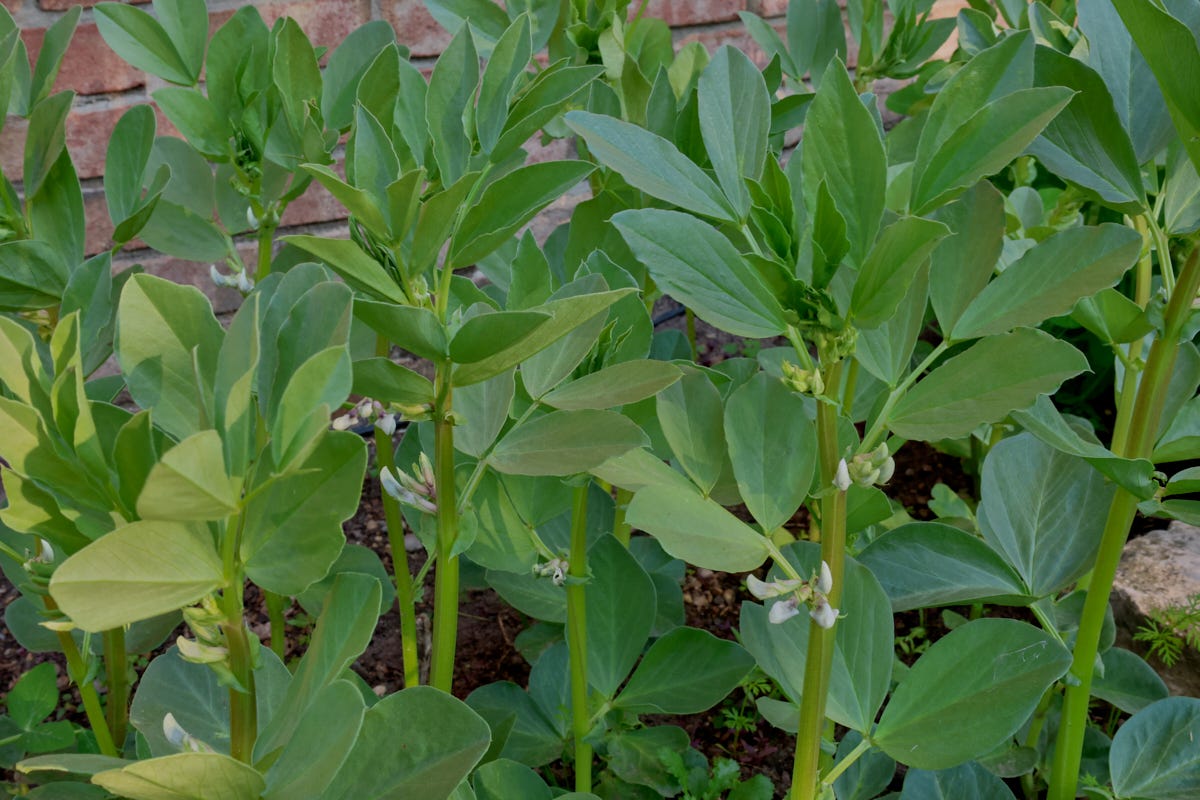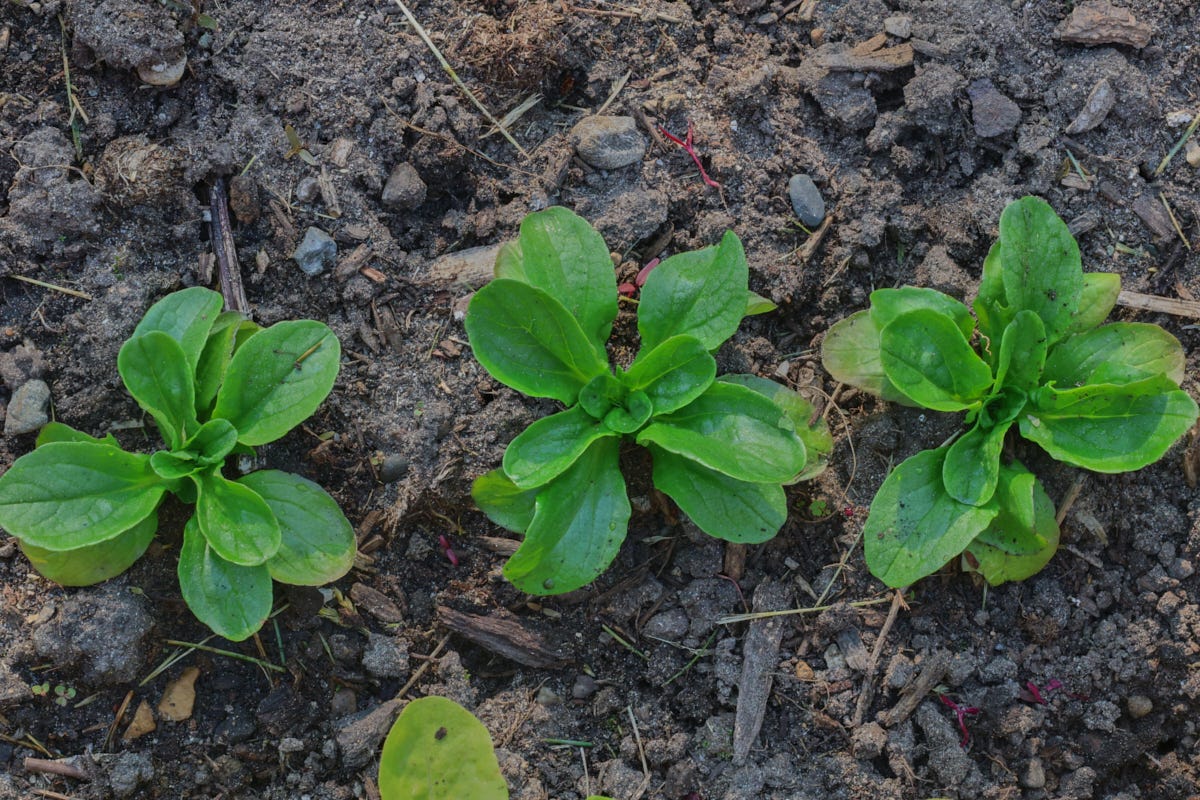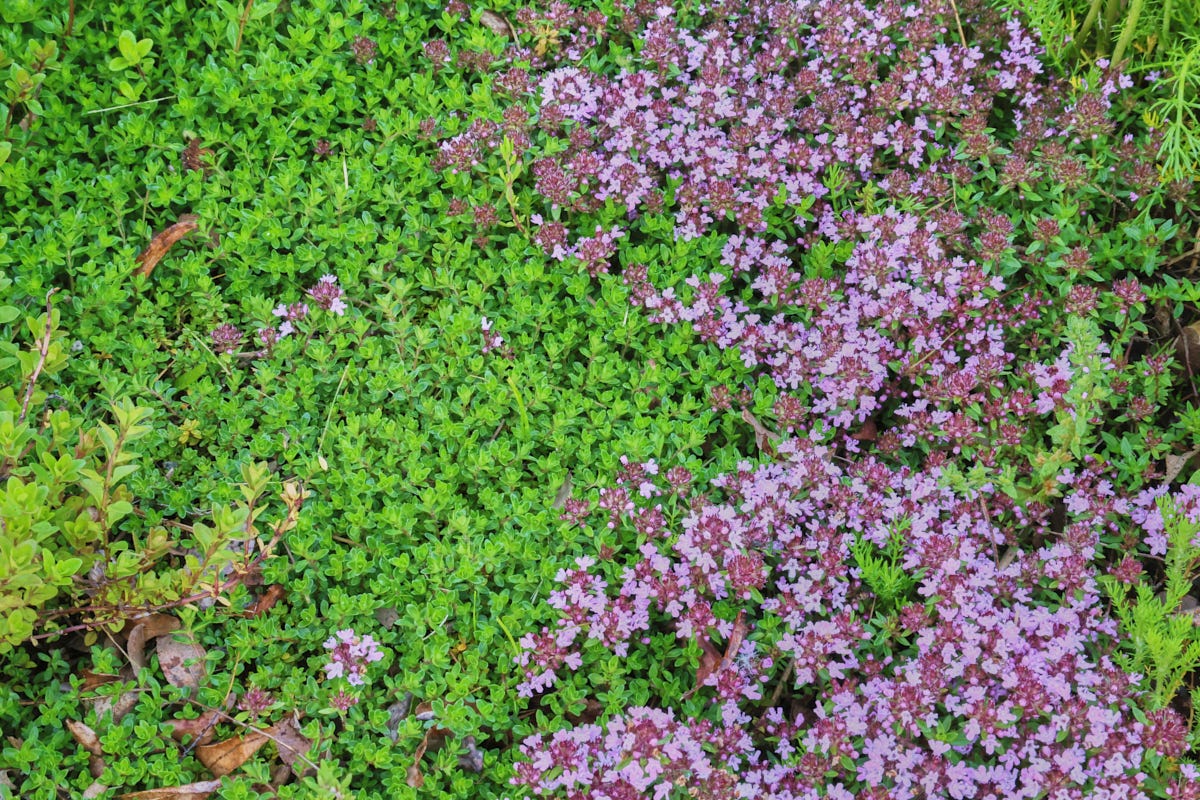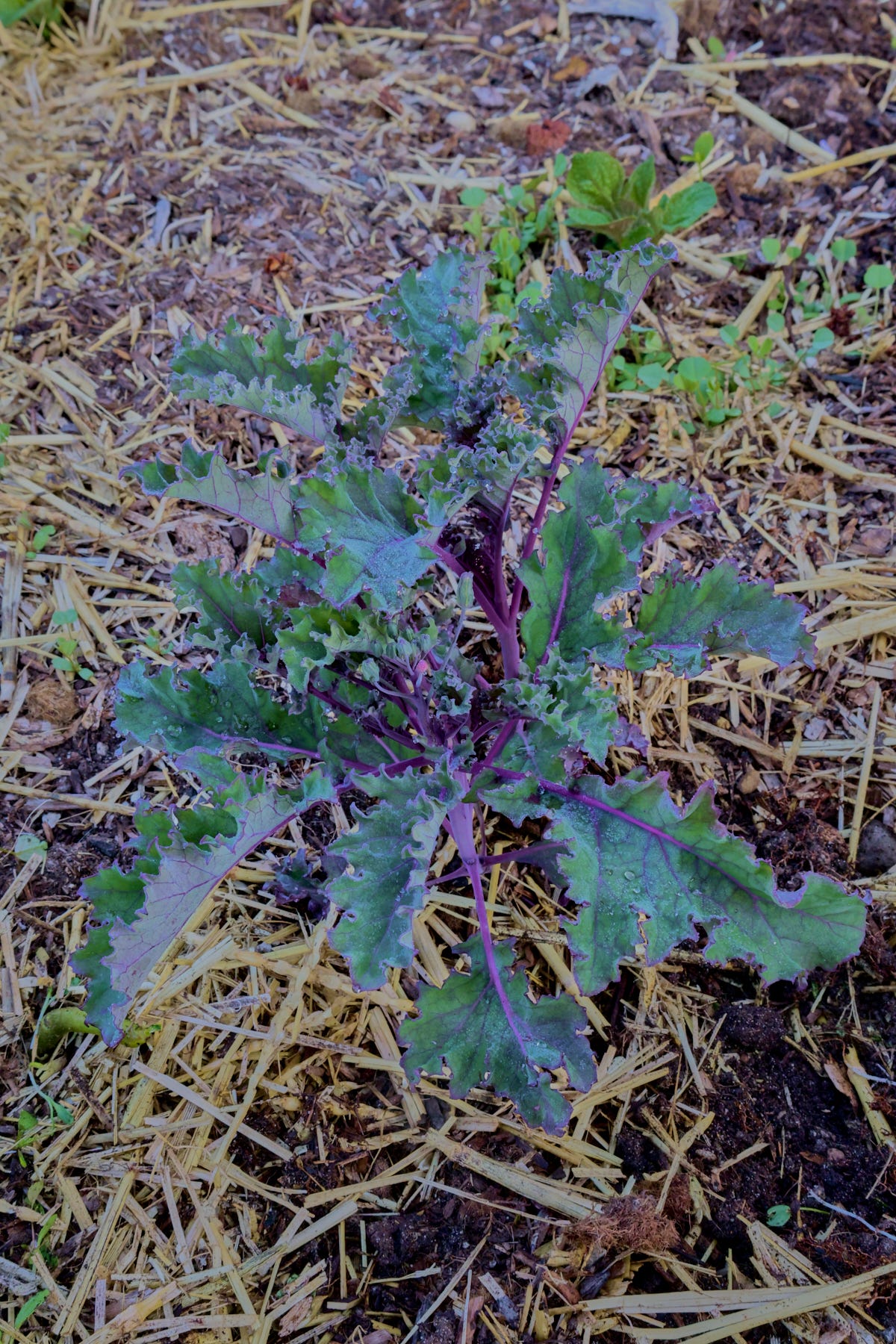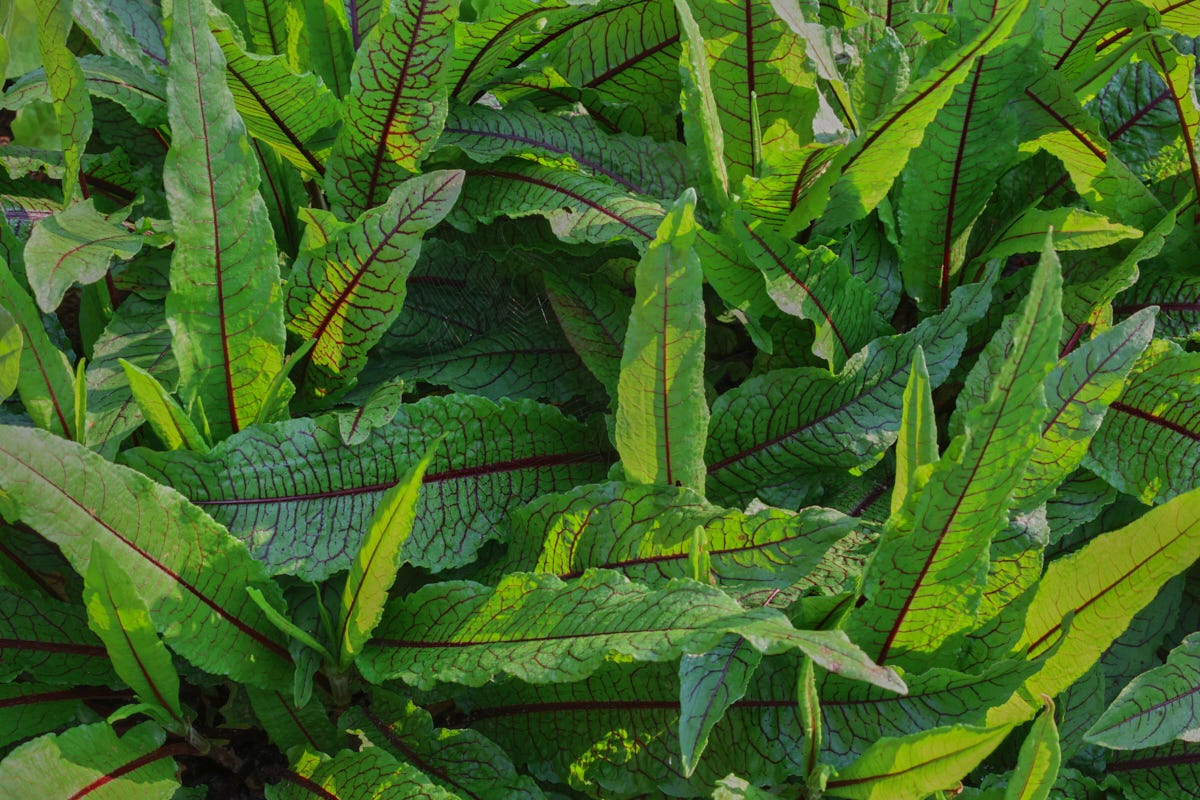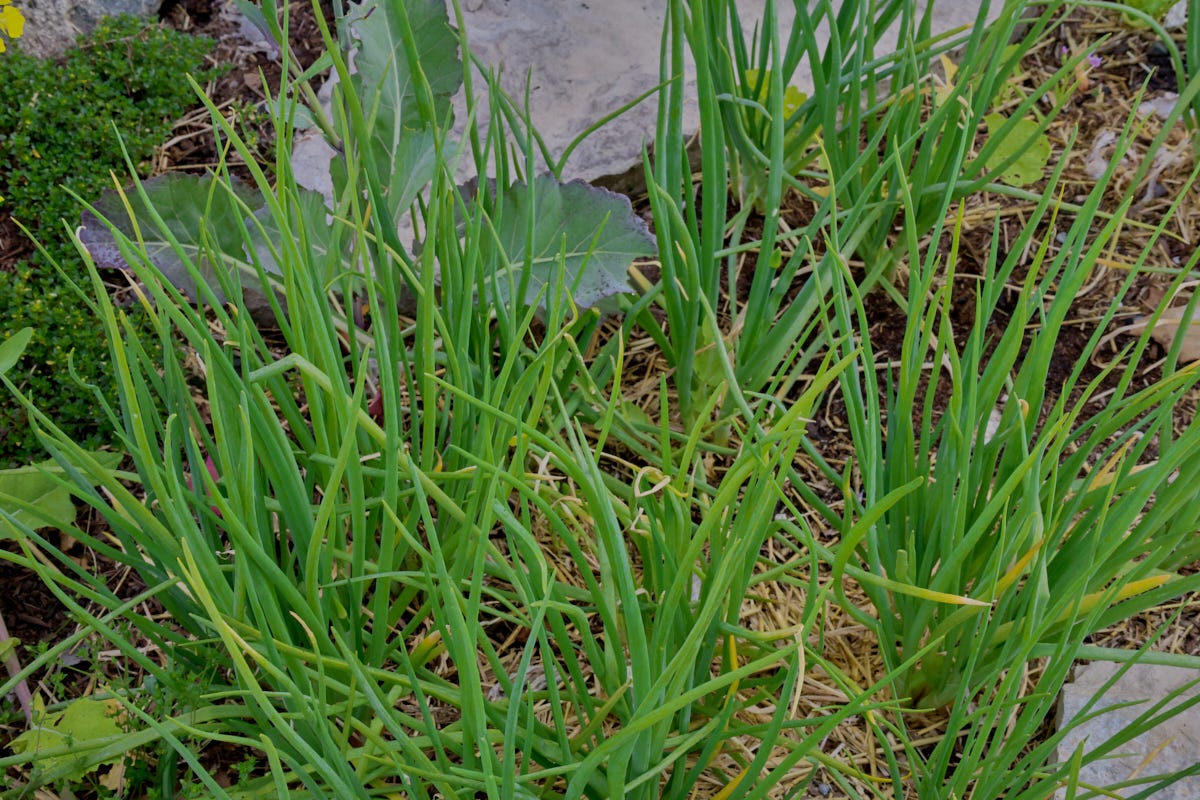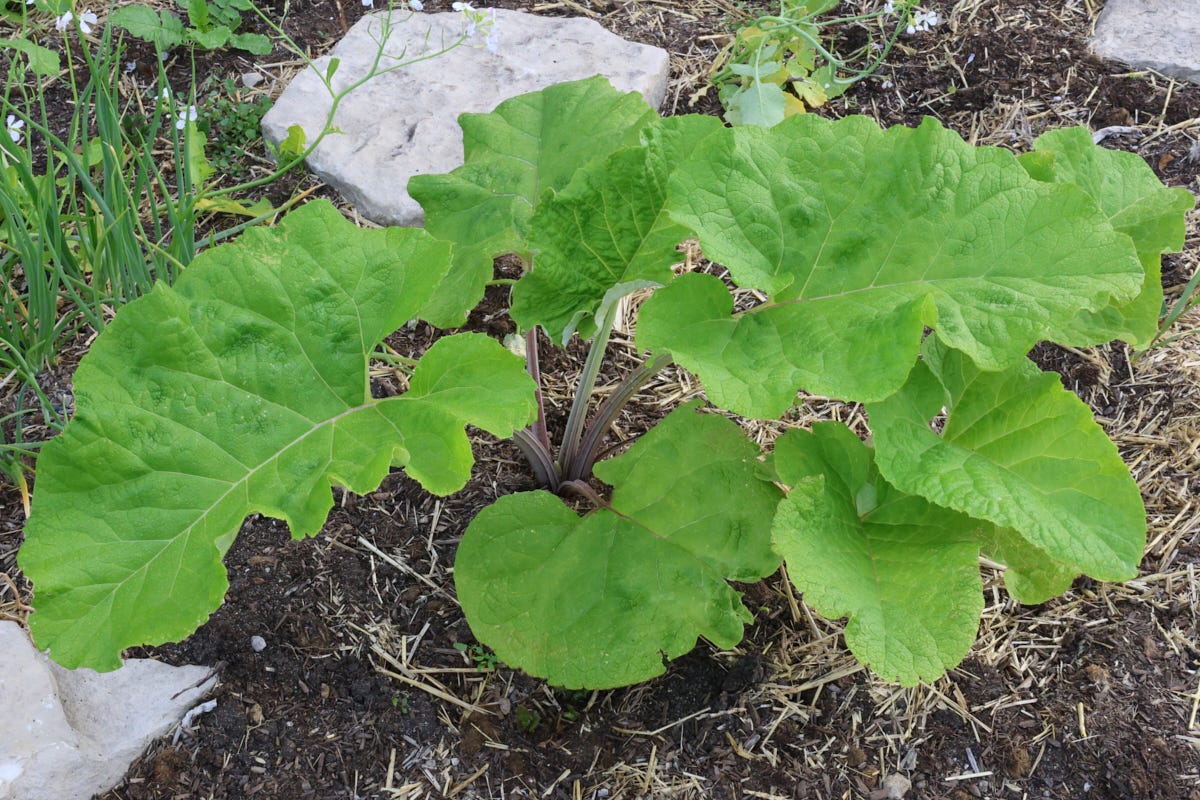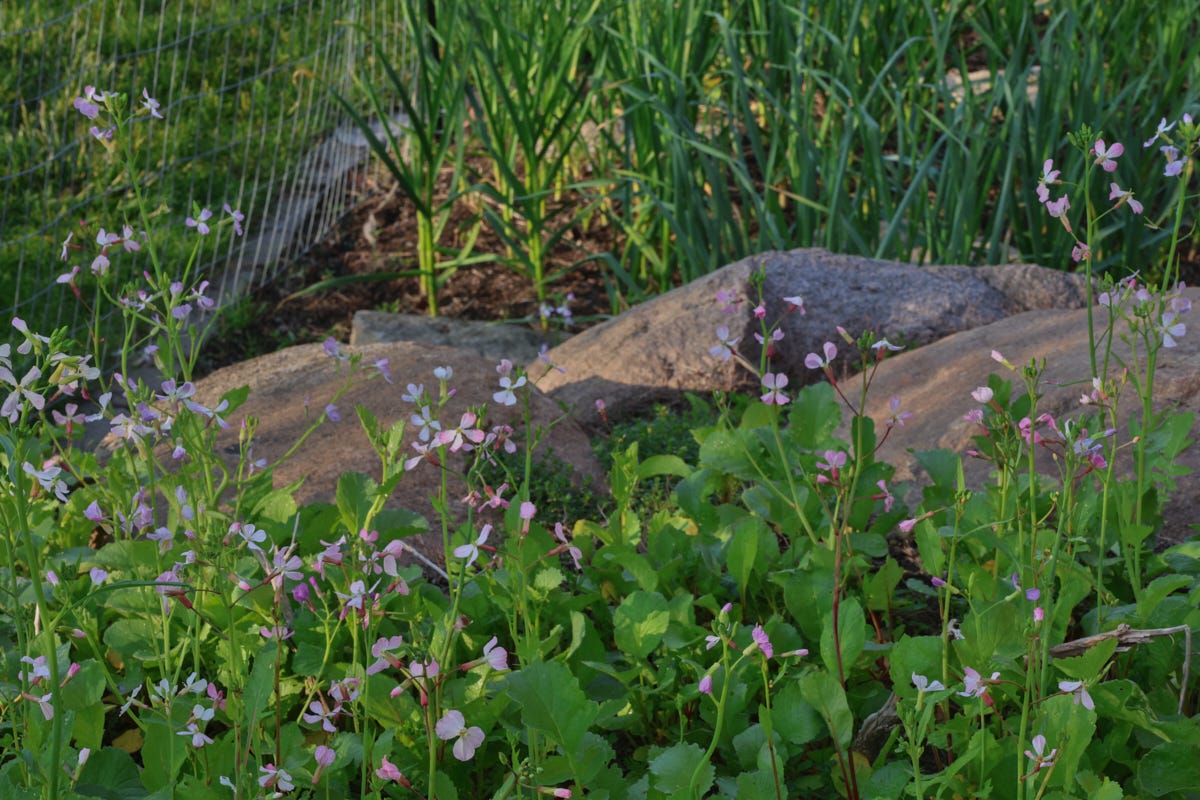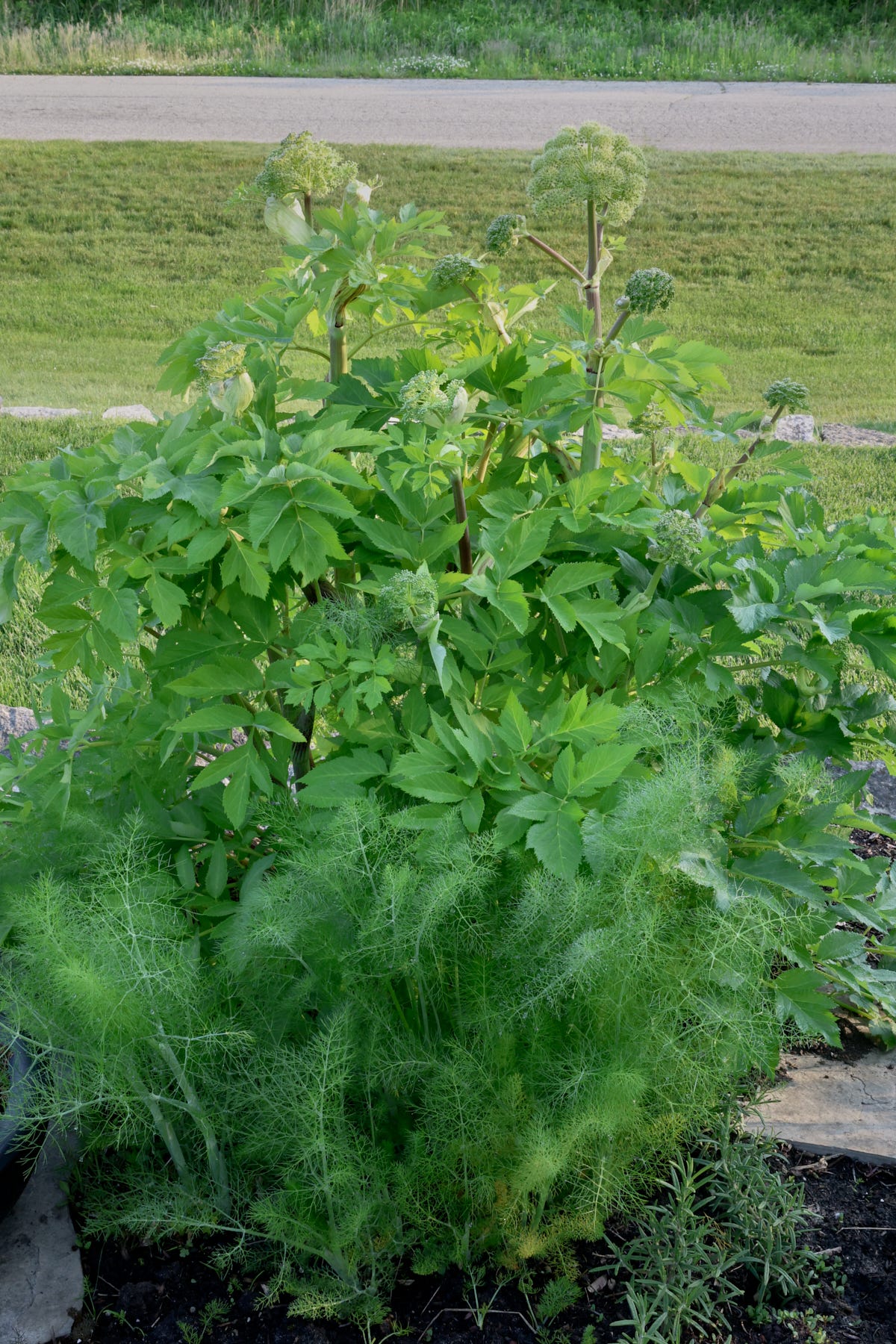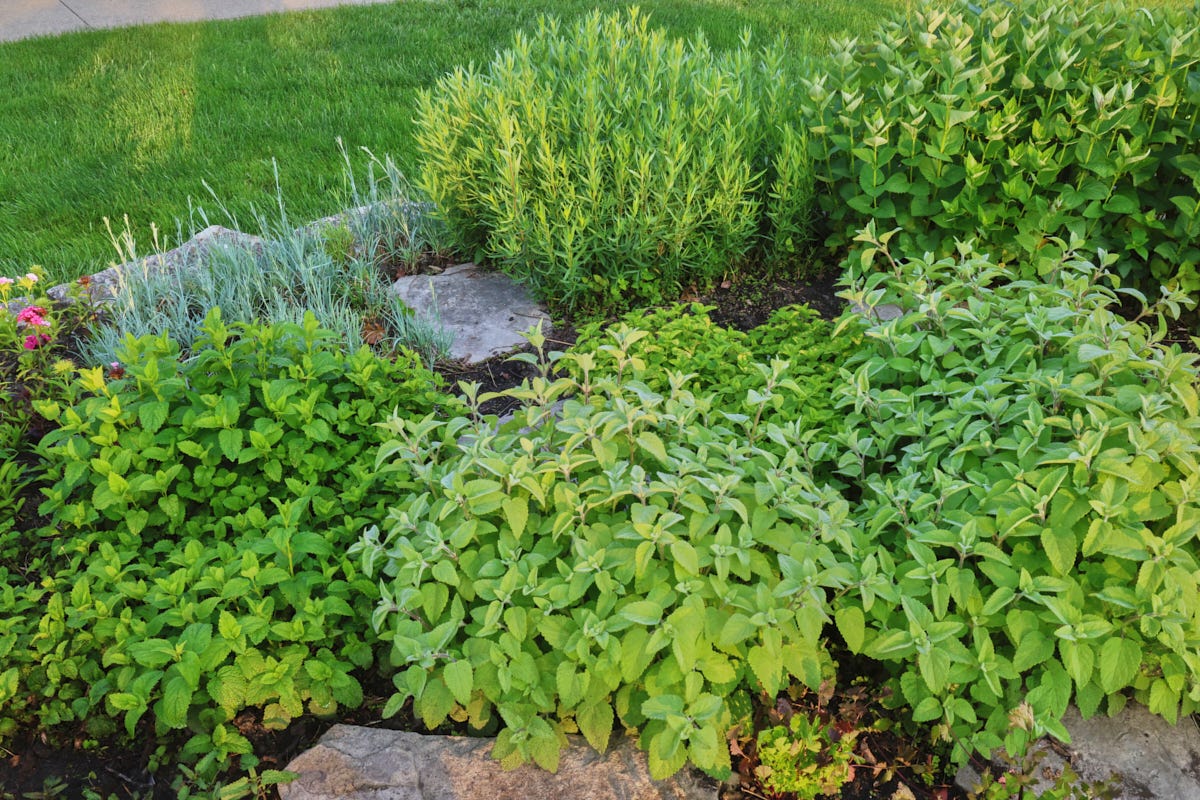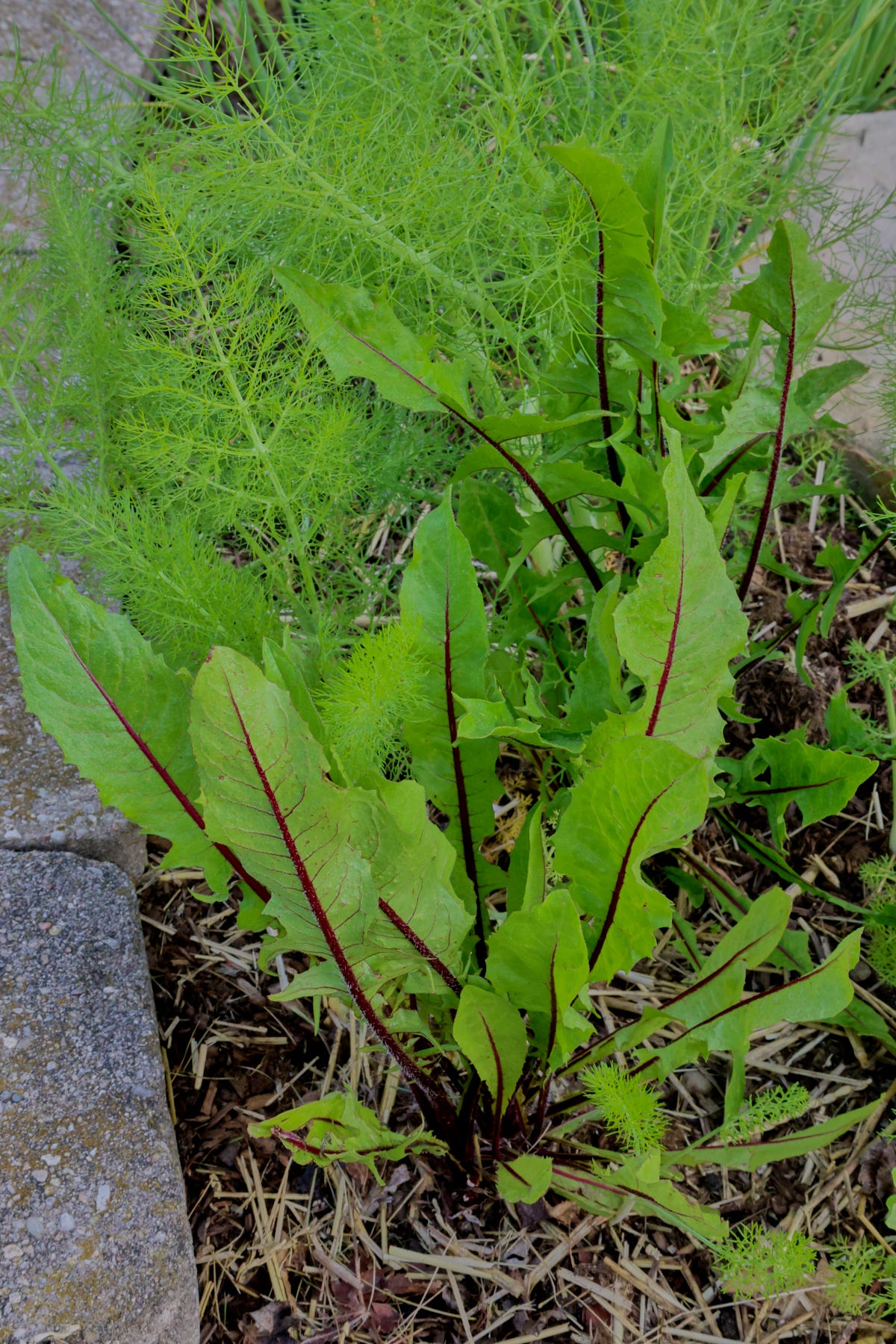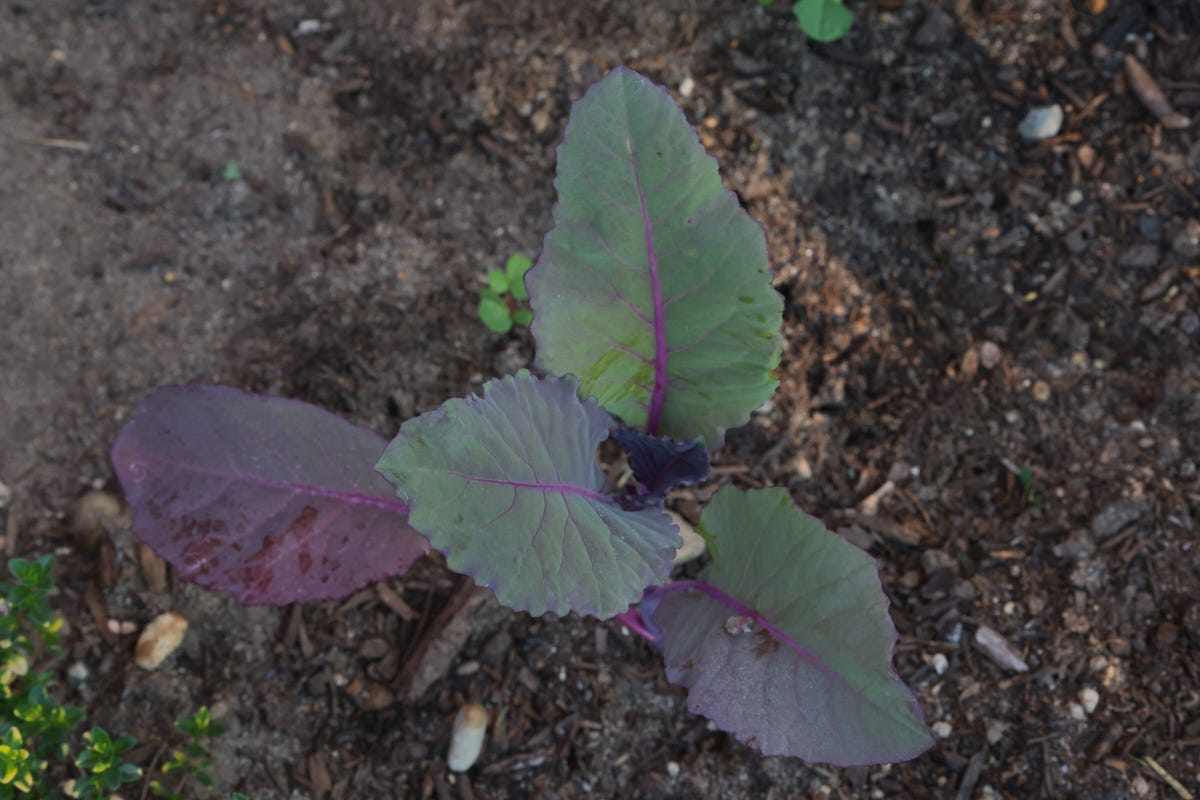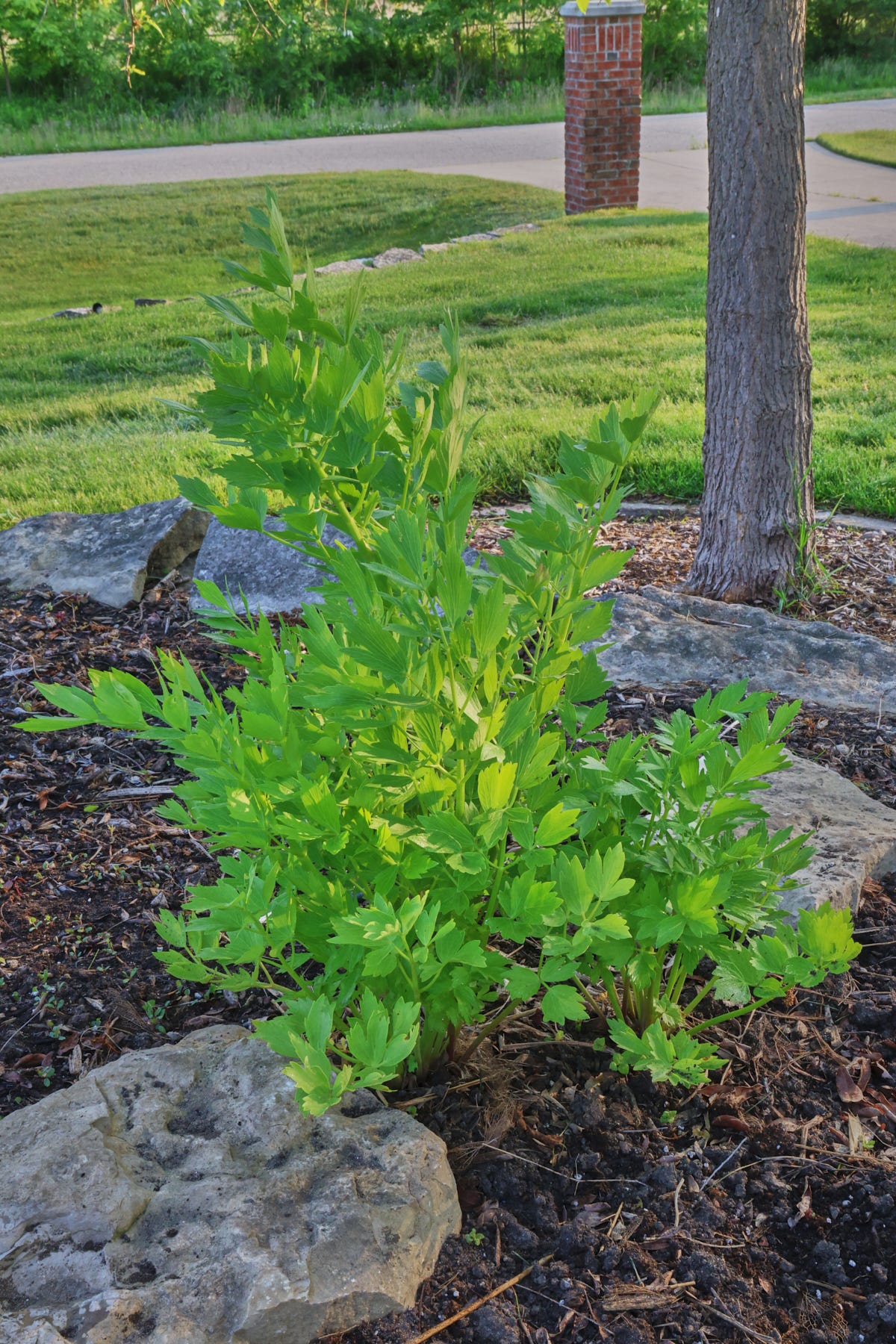Early Summer Morning Crops in the Garden
A glimpse of herbs and veggies coming up today, in the middle of the planting frenzy!
Note: This is a longer post. If it gets clipped in your email, just click “View entire message” or open it in your browser to read the whole garden bonanza.
Right now is the busiest time in the garden. I’m planting every free second, and feeling hopelessly behind. There are so many herbs and veggies to get in the ground! There’s no better time to metaphorically stop and smell the roses than right now, as there are already some gorgeous crops at their very best.
If it weren’t for all of you, I’d probably just give them a cursory and wistful glance while rushing around to keep planting, swearing, and hobbling around with my gardening back pain. (I’m practically hyperventilating to take time away from planting to write this post. But it’s so important to appreciate it all!) Thanks for inspiring me to stop this morning and appreciate these early garden gems.
Here’s some purple orach that I planted last fall, and it finally decided to come up this spring. It’s such a beautiful salad green (uh, purple). The color is magnificent, and it has a delightful crunch and mild tangy flavor.
Orange spice thyme is one of my favorite herbs. The citrus scent is floral, sweet, and magical. It has a prostrate growth habit and tiny needle-like leaves. I’ve been growing this one for many years, and I adore it! The blooms are heavenly.
This year I have 18 thyme varieties. Each one has its own distinctive scent, flavor, appearance, and growth habit. Here they are:
Caraway
Creeping lemon
English
French
Lavender
Lemon variegated
Lime
Mint
Orange
Orange spice
Purple carpet lemon
Rose petal
Royal (Thymbra capitata)
Spanish
Spanish lemon
Spanish red
Spiked (Thymbra spicata)
Wild
Fava beans deserve so much more recognition! They’re beyond delicious, and celebrated in so many world cuisines. These flower buds will soon open into beautiful black and white blooms.
It warms my heart to see these bejeweled baby lettuces in the morning sun. They’ll make summer salads so special with their various colors, flavors, and textures. And this time of year, it’s tough during planting season to keep up with weeds like this white clover popping up in between all of my crops right now.
Mâche, lamb’s lettuce, Feldsalat, or corn salad. This mild and nutty green is so special! I first encountered it when we lived in Germany, and we ate it dressed simply in walnut or hazelnut oil and a sprinkle of fleur de sel. It’s difficult to express how exciting it is to taste this, and it’s so worthwhile growing it.
It’s always been a challenge for me to grow this when sown directly in the garden. It waits until just the right moment with the perfect cool temperatures to come up. Sometimes for me it waits until the next season to sprout. So now I’ve solved this by planting it under my grow lights, where it sprouts reliably when I want it to!
The potatoes are coming! I’ve planted enough of my 28 varieties this year to fill a large bed. (You can read about my heirloom varieties in my newsletter post Heirloom Potato Planting - 28 Types! )This one is a fingerling variety, La Ratte, also known as La Ratte de Grenoble. This is really a special one. I haven’t grown potatoes in years, so I’m really looking forward to the exciting treasure hunt of harvesting them again! This was always one of the gardening jobs the kids have loved to do.
Chervil is a delicate, lacy herb with a delightful, mild flavor reminiscent of parsley and anise. It’s an ephemeral treasure in the garden that lasts only a short time, and often seems to be done for the season by the time I’m ready to enjoy it. But it’s so worth it to grow!
Here are (center row, from left to right) profusion, garlic, and common chives, with nira chives in the left foreground. These are so reliable every year, as one of the first crops to emerge each spring. I love gathering them for a huge variety of dishes. I love having this variety of them on hand every year.
My youngest daughter Mio loved eating the pungent chive flowers straight out of the garden when she was little, calling them “yonyons.” Which, in our family, eventually referred to all types of onions. I still write “yonyons” on my grocery lists today.
From left to right, here are wild, mint, and caraway thyme. And some chamomile trying to take over on the right. I love having so many thyme varieties on hand to treasure. And their blooms are adorable!
Red Russian kale. This decided to come up this spring after planting it last fall, and with crop rotation it’s now in the middle of my potato bed. I need to move it to my bed of greens. I love the substantial chew and texture when eating any type of kale. This green means business, and is such a beloved addition to the garden.
Bloody dock. I haven’t used this vibrant and mildy tangy green enough yet. It’ll be great to add to salads and soups. The colors are just stunning.
Golden and Greek oregano. I have 6 different oreganos this year, which is really exciting. They are:
Golden
Greek
Herrenhausen
Italian
Mexican (Lippia graveolens)
Mexican bush or oregano indio (Poliomintha longiflora)
The latter two are new to me this year. I’m always elated to try new varieties!
These are some red and Dutch yellow shallots that I have no recollection of planting last fall. I was shocked when they came up this spring. I looked back to my garlic order from Keene Organics, and sure enough, they were there!
And here’s the above-referenced garlic, completely filling a bed. It’s easy to succumb to gardening greed when planting in October while several of the beds are done for the season. So this spring, after I used an entire garden bed for 21 varieties of garlic, I’ve been scrambling to compensate for my garlic madness and find room for all of my other crops. Sigh.
Takinogawa burdock. I was thrilled to find this at Baker Creek, with its sumptuous roots reaching 3 feet (1 meter) long! I had somehow missed the part in the description that they’re “grown in traditional Japanese burdock boxes.” So when I tried to harvest it last fall, I was digging, pulling, swearing, and inadvertently snapping the roots in half since it was impossible to dig down that far without disturbing the other crops. So of course it resprouted from the parts that were left. It looks like I’ll have a crop of halfway snapped-off burdock roots for the foreseeable future. I need a traditional burdock box!
Here’s my bay laurel that I keep as a houseplant in the winter, and which is finally thriving back outside for the summer. Last year it had grown ridiculously tall and narrow, so late this winter (while it was still inside) I took several cuttings while at the same time prompting the plant to put out more side shoots and create a more rounded habit. I tragically didn’t water the cuttings enough, so none of them have made it. But I still have my original, which looks beautifully shaped now. And I can try again to take cuttings next year.
Radish flowers, sigh. They’re adorable, but this is what happens when I don’t get out there to harvest my radishes soon enough! I didn’t even get out there in time to thin them out this year, so they’re probably bitter and pithy. But I harvested a few today while planting, and they weren’t terrible. So we’ll see. I have to get out there and pick them!
Sweet cicely is a delightful, sweet, anise-flavored perennial. I really love this one. The lacy, delicate fernlike leaves and white flowers are so enchanting. And I adore the flavor! This will be great in iced tea this summer.
Sweet fennel (foreground) and angelica (background). I’m really lucky that I managed to get a third year out of the normally biennial angelica. And shoot! It flowers so early that once again I missed making my angelica liqueur and candied angelica while the shoots were at their most tender! They supposedly taste the mildest before flowering.
Well, it’s a good thing I like strong flavors. The angelica liqueur that I made last summer has been steeping for 11 months now. So I need to taste it and see how it turned out! If it’s good, I’ll do a blog post with the recipe. It’s not ok that this ripens so early before I finish my spring planting madness!
Here are my “balms”, which seem to look their best at this time of year before they try to take over the planet. (And also, in the background from left to right, there’s some sweet william, clove pink, French tarragon, and anise hyssop. And the edge of some cilantro (coriander) in the foreground.)
Dammit, I should have known that being in the Lamiaceae (mint) family, these balms would be tough to wrangle when planted in-ground. I mean, I did know, but just not the ridiculous extent of reseeding all over the entire garden bed every spring. And when my number of planters is limited, the mint goes in them first!
Here are the balm varieties I have this year, and one new variety I’m about to plant this week:
Lemon limoncello
Lemon Quedlinburger Niederliegende (This is the new one this year.)
Lime
Orange
Variegated lemon
These have phenomenal scents, and they’ll be amazing in iced tea and summer cocktails! I could also try them in desserts, especially with the nuances of these different varieties.
Italiko rosso dandelion and Florence fennel. I planted both of these last fall, and both have decided to grace me with their presence again. I’m especially glad to have another chance with the fennel, as I was just about to start more of them from seed under my lights to grow in the fall again.
Last year, I direct-sowed it in the garden in July, and the bulbs didn’t have enough time to fully form before winter arrived. I need to live somewhere warmer than the arctic-freeze-level of hardiness zone 6A.
Hopefully, by the fall, I’ll have full fennel bulbs this time. The days-to-maturity timing for Florence fennel is around 80-100 days, so this time I have a chance!
Palla rossa radicchio. This is another one that I planted last fall that’s coming up again. I haven’t even tasted this one yet! I’m really looking forward to it. I really love salad greens with a note of bitterness.
A beautiful Purple of Sicily cauliflower seedling that I started in early April under my grow lights. The luminous colors are just gorgeous. I’m really looking forward to the purple heads on this cauliflower when it’s mature.
Eros escarole. Another carryover from last fall. And another that sadly, I still haven’t even tasted yet. I’m excited to experience the nutty, slightly bitter flavor that it’s known for. Note to self: If I don’t find the time to taste every one of my crops each year, maybe I have too many damn crops!
Sweet woodruff is a gorgeous herb that doubles as a groundcover, even in total shade! There’s always a part of a garden bed that doesn’t get enough sun, and this is where I plant this versatile herb. If given the chance to plant something in my landscaping, I’ll always seek out every opportunity to grow something edible. There are such a wide variety of global botanical opportunities to flavor our food and drink, and I love to experiment with this!
Sweet woodruff is often characterized as having flavors of vanilla, grass, and almond. I need to make some May wine out of it at some point. This is a German tradition, and involves macerating the sweet woodruff in white wine, often with fruit. I’m sure it’s divine.
Lovage, my archnemesis in the herb garden. I first encountered this when I was living in Germany, and I mistook it for cutting celery. It was easy to make this mistake as it’s in the same Apiaceae family, which also includes regular celery, so it looked very similar.
This is no ordinary or mild celery relative. It has a knock-your-socks-off level of celery flavor, with a bitter, earthy edge. That first time I bought it, thinking it was cutting celery, I completely ruined the sauce I was making. And I adore celery flavor! Especially my beloved Doc Brown’s Cel-Ray soda. It’s absolutely the best! You have to try it. So please know that my disdain for lovage isn’t from an underappreciation of celery flavor. It actually is that ridiculously strong.
Now I know that if I ever use lovage, I’m going to start with just the tiniest portion of a leaf. Sheesh. I like having this herb in the garden to keep me humble, and to know there are some herbs (like salad burnet and pineapple sage) that I have yet to fully appreciate.
But there’s another reason that lovage is special to me. When I first discovered it while living in Germany, it was of course with the German name Liebstöckel. It’s just so much fun to utter this word. So much so that I no longer need to say the name in English, just like with my other favorite German words to say, Spargel (asparagus), zum Mitnehmen (takeout), and Staubsauger (“dust sucker” or vacuum cleaner.) I just adore these!
There, isn’t your day so much better now? When you have words that are this enjoyable to say, you have to take advantage of this linguistic opportunity. But I digress. The garden awaits.
Here’s my last photo for this early summer morning crop post:
Here are some daikon (or “tillage”) radishes that came in the mix of winter-kill cover crop seeds that I had planted last September. I had sprinkled the seeds among my ripening fall crops, while the weather was still warm enough for them to sprout. And my fall crops were already well enough established that the cover crop seedlings didn’t impede their growth before they were ready for harvest.
I wanted to give the cover crops as much opportunity for growth as possible before winter took them down. These radishes in the photo were part of the cover crop seed mix that also included oats, cowpeas, fenugreek, lentils, millet, brown flax, turnips, and mustard seeds. Using cover crops (also known as “green manure”) is a great agricultural practice that’s included in permaculture and regenerative agriculture.
Good cover crop management provides so many advantages in your garden regimen: this prevents erosion, adds biomass to the soil, improves the soil condition (including structure, level of aeration, moisture retention, etc., collectively also known as “tilth”), reduces weed and pest pressure, “fixes” nutrients into the soil in a way that’s bioavailable for root uptake, feeds soil microorganisms, and prepares your garden bed for the next season of crops.
Plus, it’s really important to me to use strictly organic and vegetative amendments to the soil, with none of them derived from animal sources. Cover crops are a great part of an integrative practice to have your garden absolutely thrive with no animal inputs.
And daikon radishes are especially helpful in breaking up compacted soil and allowing water and roots to penetrate it. They also pull up nutrients from deep within the soil. So if you have the time and room to let them ripen and then decompose in the soil, these nutrients will be distributed slowly into the soil.
Anyway, these newly-sprouted radishes had come up everywhere this spring in my freshly-planted potato bed. You can see the new potato plants sprouting in the background of the above photo. I spaced the potatoes pretty tightly within their normal range, and I didn’t think I could spare the room to allow these radishes to continue growing. But alas, these baby ones were so cute in this photo!
I’m so grateful to any of you who have stuck around long enough to get through this post. I hope my garden photos and ramblings provide value to you! Please let me know in the comments below if you have any feedback, questions, or requests for me to address as the gardening season gets underway. I’m so glad you’re along for the ride! Thanks, as always.
🌱Shell
If you haven’t subscribed yet to this free newsletter, please add your email below. You’ll receive an email whenever I add a newsletter like this one, or add a new post to my global heirloom gardening and vegan food blog, Shovel and Crunch. I’d love to have you along with me as I grow and cook exciting food from all over the world!





